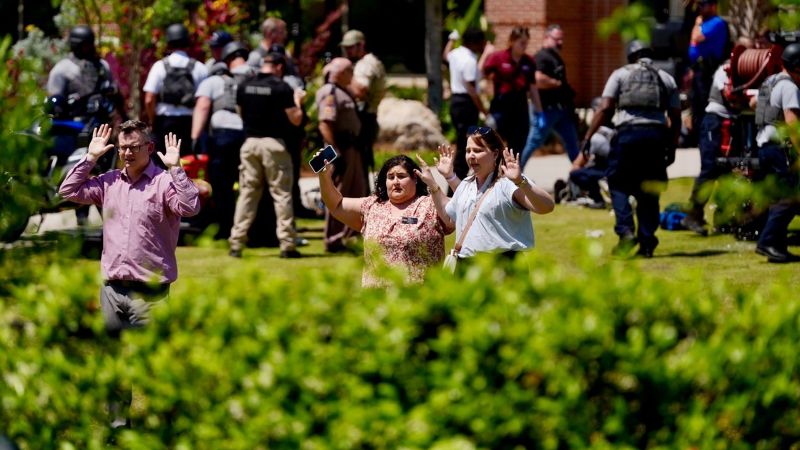Join our newsletter to get the latest military space news every Tuesday by veteran defense journalist Sandra Erwin. As former Secretary of Defense Ash Carter once mused , the current military rank structure “dates back to when Napoleon was invading Europe 200 years ago.” While there are good reasons this system endured for so long, there are many more reasons it is inadequate for the challenges the military faces today.
The failings of the current system are perhaps most pronounced and most urgent in the most high-tech and specialized military service, the United States Space Force. The Space Force is unique among the military services because the capabilities it provides — from missile warning and nuclear command and control to the ubiquitous Global Positioning System — require a highly experienced and educated cadre of personnel. This is reflected in the force, where 48% of guardians are officers, compared to just 17% in the rest of the military.

Within the officer ranks, the Space Force has a larger share of field grade officers (O-4 to O-6) than any of the other services, and within the enlisted ranks, it has the largest share of senior non-commissioned officers (E-7 to E-9). Twice as many enlisted guardians have a four-year college degree or higher than enlisted personnel in the rest of the military, and 57% of Space Force officers have an advanced degree, compared to 38% of officers in the other services. Moreover, the dividing line between officer and enlisted is increasingly blurred because nearly the same percentage of senior enlisted in the Space Force have advanced degrees as officers in the Marine Corps.
The legacy rank structure the Space Force inherited from the Air Force does not provide the right incentives to shape the workforce it needs. For example, a senior master sergeant with 20 years of experience and a PhD does not have the same opportunities for growth and is paid less than a captain with four years of experience and a bachelor’s degree. Officers are effectively locked into a one-size-fits-all career model that rotates them among jobs so frequently they have little time to develop deep domain expertise.
This disjointed and discontinuous talent pipeline does not provide the right tools to develop the skills and expertise the Space Force requires. In the other services, particularly the ground forces, this is a feature not a bug. They want many young and strong recruits to fill jobs that are physically demanding, and far fewer are needed for positions that require higher level intellectual skills and experience.
It should not be a surprise that a rank structure designed for an 18 th -century Army is ill-suited for a 21 st -century Space Force. To attract, retain and grow the talent necessary to remain the world’s preeminent space power, the Space Force needs a rank structure and personnel system designed for guardians. As I detailed in a recent AEI paper , a new rank structure could combine the legacy enlisted and officer ranks into a single unified system that is fit for purpose.
To be clear, this is not intended as a final answer but rather as a starting point for discussion. Creating a new rank structure also requires other reforms to the personnel system. For example, lateral entry and re-entry should be the norm rather than the exception so that all guardians enter and re-enter the service at a rank commensurate with their education and work experience.
The promotion system should be based on education, experience and performance, rather than time in grade and peer groups. The service should create separate technical and leadership tracks, allowing technical track personnel to remain in jobs longer and become more specialized in their respective disciplines. And it should replace specialty codes (such as 13S Space Operator and 63A Acquisitions Manager) with skill level certifications that guardians can earn throughout their career.
Critics arguing against a different rank structure for the Space Force might warn that personnel would not be easily aligned with their peers in the other services for the purposes of protocol and precedence in joint meetings and operations. This can be remedied in the same way the military currently translates between civilian, foreign military, and U.S.
military ranks with equivalency tables and Geneva Convention categories . Historically, major reforms to personnel systems have been met with stiff resistance, in part because they attempt to make changes for all the services at once. But this proposal focuses only on the Space Force — just 9,000 people out of 1.
3 million in the active-duty military. While it would take time for people to learn the new system, guardian ranks would soon become as natural and commonly understood as the fact that a Navy Captain outranks an Air Force Captain. Guardians should embrace these changes, even if they are uncomfortable at first, because it will give them more flexibility and opportunity in their careers.
Enlisted guardians will have opportunities to progress into higher leadership roles commensurate with their abilities. Officers will have more control over their careers and the ability to pursue their passions, even if that means leaving the Space Force for a few years and later returning at a rank commensurate with their new skills. Changes like these will not be easy.
They require senior Space Force leaders willing to alter the very system that brought them to the pinnacle of their careers, and members of Congress willing to expend political capital to solve a growing problem many of their peers do not yet see. The risk of not taking action is that the Space Force will be unprepared to grow and move beyond “protect and defend” to a doctrine built around space superiority . At his confirmation hearing, incoming Secretary of the Air Force Troy Meink stressed this point , saying “These [space systems] are some of the most complicated systems, and if the U.
S. is going to maintain our advantage, which we need to do in space, we need to make sure we have the right workforce.” The stakes are high as the Space Force’s budget and mission expand, and its success will depend on far more than satellites, ground stations and launch vehicles.
The Space Force’s most important system is its personnel system — and that system is in urgent need of modernization. Todd Harrison is a senior fellow at the American Enterprise Institute, where he focuses on defense budgeting, space policy and space security. He previously worked at other think tanks, as a senior executive in industry and as a captain in the Air Force Reserves.
SpaceNews is committed to publishing our community’s diverse perspectives. Whether you’re an academic, executive, engineer or even just a concerned citizen of the cosmos, send your arguments and viewpoints to [email protected] to be considered for publication online or in our next magazine.
The perspectives shared in these op-eds are solely those of the authors..
Technology

Outgrowing Napoleon: How the Space Force can modernize its ranks

As former Secretary of Defense Ash Carter once mused, the current military rank structure “dates back to when Napoleon was invading Europe 200 years ago.” While there are good reasons [...]The post Outgrowing Napoleon: How the Space Force can modernize its ranks appeared first on SpaceNews.















